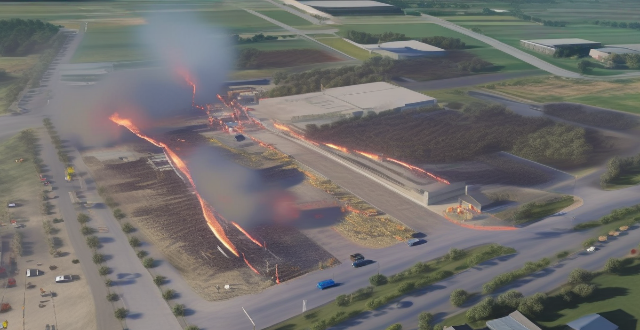High-rise buildings face unique fire safety challenges due to their height, occupant density, and complex systems. To prevent fires in these structures, various measures can be taken, including engineering solutions like smoke control systems, fire-resistant construction, and automatic sprinkler systems. Administrative actions such as developing a fire safety plan, conducting training and drills, and implementing clear signage and emergency lighting are also crucial. Additionally, legislative measures, including compliance with building codes and insurance requirements, play a vital role in ensuring fire safety. By combining these approaches, high-rise buildings can significantly reduce fire risks and protect occupants.

Measures to Prevent Fires in High-Rise Buildings
High-rise buildings pose unique fire safety challenges due to their height, density of occupants, and the complexity of their systems. Here are some measures that can be taken to prevent fires in these structures:
Engineering Measures
Smoke Control Systems
- Design: Incorporate engineered smoke management systems to control the movement of smoke within the building.
- Maintenance: Regularly inspect and maintain these systems to ensure they function properly during an emergency.
Fire Resistant Construction
- Materials: Use fire-resistant materials for construction, including fire-rated doors and walls.
- Compartmentalization: Design the building with compartmentalization to limit the spread of fire.
Fire Detection and Alarm Systems
- Early Detection: Install and interconnect early warning fire detection systems throughout the building.
- Audibility: Ensure alarms are loud enough to be heard in all areas of the building.
Automatic Sprinkler Systems
- Coverage: Install automatic sprinkler systems that cover all occupied areas of the building.
- Water Supply: Ensure an adequate and reliable water supply for the sprinkler system.
Electrical Safety
- Wiring: Properly install and maintain electrical wiring to prevent overheating and fires.
- Inspections: Regularly inspect electrical systems for any signs of damage or improper use.
Elevator Control
- Fire Service Access: Elevators should be designed for firefighter use during emergencies.
- Smoke Protection: Prevent elevator shafts from acting as chimneys by including smoke detection and protection measures.
Administrative Measures
Fire Safety Plan
- Development: Create a comprehensive fire safety plan that includes evacuation procedures and responsibilities.
- Updates: Review and update the plan periodically to reflect any changes in the building's usage or structure.
Training and Drills
- Staff Training: Train staff on fire safety procedures, including the use of fire extinguishers and emergency response.
- Evacuation Drills: Conduct regular evacuation drills to familiarize occupants with emergency procedures.
Signage and Emergency Lighting
- Clear Signage: Install clear and visible signage indicating escape routes and emergency exits.
- Emergency Lighting: Ensure that emergency lighting is present to guide occupants during power outages.
Restrictions on Hazardous Materials
- Storage: Limit the storage of combustible materials and enforce strict guidelines for hazardous materials.
- Disposal: Properly dispose of waste to prevent the accumulation of combustible materials.
Legislative Measures
Compliance with Codes
- Building Codes: Ensure that the building complies with all relevant fire safety codes and regulations.
- Inspections: Undergo regular inspections by local authorities to verify compliance.
Liability Insurance
- Insurance Requirements: Enforce requirements for liability insurance that covers fire damage, encouraging owners to maintain fire safety measures.
By implementing a combination of engineering, administrative, and legislative measures, high-rise buildings can significantly reduce the risk of fires and protect their occupants. It is crucial that all stakeholders, including building owners, managers, occupants, and emergency responders, work together to create a safe environment.